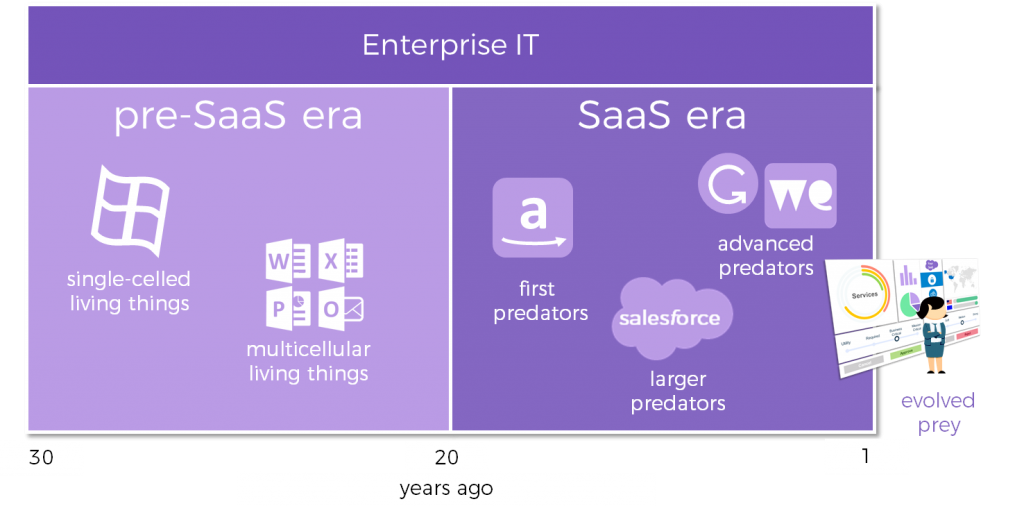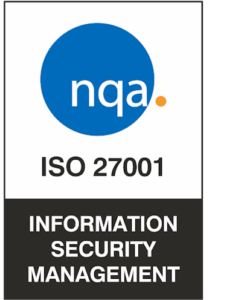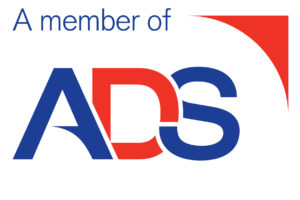
SaaS - the "Cambrian Era" for Software
For archaeologists, one of the most exciting times in pre-history was the Cambrian Era, which began about 540 million years ago. At that point, life had existed on Earth for over three billion years, slowly and steadily evolving into more complex plants and some animals.
But then something changed in the environment, something that prompted a massive increase in the diversity of life. Archaeologists call it the ‘Cambrian Explosion’ because of the incredible rate at which billions of new species emerged, filling every ecological niche across the planet. It was the end of the era of simple life, and the start of the burgeoning ecosystems we know today.
No-one really knows what caused the change, but the leading theories propose an increase in available oxygen levels combined with rapid innovation of the building blocks of complex life such as nervous systems and sensory organs.
Prior to the Cambrian Era, the dominant life on earth were ‘weird’ and immobile creatures that survived by simply and directly absorbing ever-increasing nutrients from their environment (sea water) without any significant evolution over time. These creatures then mainly disappeared as the Cambrian Era kicked off.
In the world of enterprise IT we have been living in our own pre-Cambrian Era since the dawn of computing, with private, locally-managed enterprise applications being the dominant life form, evolving slowly and absorbing our IT budgets over many years of deployment.
But the past decade has seen our IT environment evolve the building blocks of our own Cambrian Explosion, and it’s on course to fundamentally change the way organisations consume and manage their application infrastructure.
The era of private, locally-managed enterprise applications is nearing its end, and they are being supplemented (and eventually, replaced) by huge numbers of rapidly-evolving “Software-as-a-Service” (SaaS) applications.
At the most basic level, virtualisation of computing is a simple change that has ultimately had profound effects on industry and society. The ability to create a ‘virtual machine’ to run application software instead of requiring new physical servers to be bought, installed and managed, created conditions that led to Cloud computing, with a business model that has driven it to over $250B in revenues in 2020, and double-digit annual growth for the foreseeable future (according to Gartner).
Cloud has disrupted the economics of computing in a fundamental way, and we’re still seeing the effects of that shake out.
In our oceans, the Cambrian Era saw the evolution of organisms that could better exploit their environment by becoming ‘predators’ because they were faster and more effective than their less agile competitors.
Just like living organisms in the Cambrian, the most agile and innovative players in the world of IT have been ahead of the race to exploit the disruption of Cloud, and what we’ve seen is an explosion in the number and variety of SaaS applications being brought to market – tens of thousands of applications in just a few years.
Cloud removed the barriers to entry into the global application market, so that one person with a great idea could bring an application to market and begin to prey on the competition with literally no up-front investment in computer hardware. That same person could, with a relatively small team, scale it from one user to millions without any infrastructure upgrades, and offer it to a global audience from the very first day – devouring the existing market.
With such an upset to the dynamics of the eco-system, the “pre-Cambrian” enterprise software vendors have been left with no choice but to jump on the SaaS bandwagon as well. The net result is a major rotation away from ‘classic’ enterprise software, installed and carefully tended by in-house IT experts, to SaaS-delivered applications. According to Gartner, SaaS spend will reach $104B in 2020, and already represents one-quarter of the whole global enterprise software market.
In the oceans, the Cambrian Evolution was a universal change. As the predators evolved, their prey needed a different approach and also evolved new ways of defending themselves. This may have started with hard-bodies and claws, but as we dragged ourselves out of the water and into the trees it ultimately led to evolution of greater speed, intellect and the ability to interact socially to provide greater protection to the entire group.
And it’s the same when dealing with SaaS. On the surface, SaaS looks like a relatively simple change in how software is delivered – it’s still software, it just runs somewhere else, right? But in fact, the implications for enterprise IT are fundamental and far-reaching. SaaS requires a different approach at almost every touch point, from how it is selected and procured, through to how it is used, managed and operated. Just like our aquatic ancestors, we must adapt to combat the new risks that SaaS brings to the business.
We will dive deep into the implications of SaaS for enterprise IT later in this series of blogs, but here are five key takeaways in the meantime.
- The relationship with the software vendor is radically changed when software is delivered as SaaS. The vendor operates the service day-to-day, with the customer’s data stored on the vendor’s infrastructure and under vendor control. With limited direct control or even visibility behind the SaaS curtain, the relationship with the vendor is deepened and the IT team must take on an enhanced governance and compliance role on behalf of the organisation.
- SaaS changes the procurement dynamic for software: with dramatically simplified on-boarding (no servers required, no installation) and a lower up-front investment due to month-by-month payments, maybe on a credit card, individuals and teams are empowered to choose and use the applications they feel meet the needs of their business processes. The IT team will still coordinate the procurement of a few core mainstream applications (think Office 365) but for the vast majority of SaaS, the line of business will not feel the need to involve IT.
- The disruptive economics of Cloud mentioned above means that SaaS applications are often very focussed on a small set of functions. With traditional enterprise applications, high fixed costs (of customer acquisition, distribution, support, etc.) meant that there was an advantage to both the vendor and the consuming organisation in combining many functions into a suite of software, sold under an all-you-can-eat enterprise-wide license. That acted to exclude other smaller players. But SaaS levels the playing field so a micro-scale software vendor can launch and successfully support an application that focusses on doing only one special thing that is both very useful for an organisation and also very easy to procure and employ alongside other software, due to the ubiquity of the web-browser.
- Due to the points above, organisations will interact with many more vendors. Instead of a few tens of enterprise applications managed by in-house IT, they will have hundreds or thousands of SaaS applications in regular use, many of them niche and used by a small subset of their people.
- The risk profile for the organisation will change. Since most adoption is driven from outside IT and likely without much attention to data governance, cost control or business continuity, the risks due to SaaS applications will be different in nature. In some cases the risk will be lower, in some cases higher, but they will change and will need to be assessed and actively managed to avoid unpleasant (and expensive) surprises.
Like life on earth after the Cambrian, expanding to fill every ecological niche, we’re at a point of huge potential benefit for any organisation that can embrace the SaaS model for their applications. They can exploit a velocity of innovation that has never been seen before, whilst enjoying flexible commercial models that directly relate software costs to their business operations. They can free their IT teams from tending infrastructure to focus on higher-value tasks like transforming the way they interact with customers, and ensuring that business processes run optimally and comply with legislation.
Like life on earth after the Cambrian, expanding to fill every ecological niche, we’re at a point of huge potential benefit for any organisation that can embrace the SaaS model for their applications. They can exploit a velocity of innovation that has never been seen before, whilst enjoying flexible commercial models that directly relate software costs to their business operations. They can free their IT teams from tending infrastructure to focus on higher-value tasks like transforming the way they interact with customers, and ensuring that business processes run optimally and comply with legislation.
But just like our Cambrian Era prey, going all-in on SaaS can only be done safely with a similarly evolved approach to defence in the form of greater speed, understanding and new processes that can protect the entire group. It is these things that many organisations will struggle to fully evolve in order to exploit the SaaS Era quickly and efficiently.
In the next set of blog posts, we’ll explore these aspects of SaaS management in more detail and look at how we can give evolution a helping hand.

